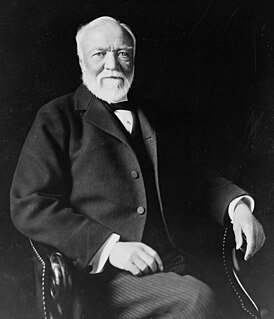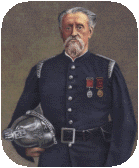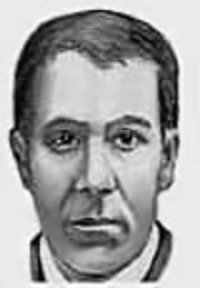Related Research Articles

The Soldier's Medal is an individual decoration of the United States Army. It was introduced as Section 11 of the Air Corps Act, passed by the Congress of the United States on July 2, 1926. The Army' Soldier's Medal is equivalent to the Navy and Marine Corps Medal, the Air Force and Space Force's Airman's Medal, and the Coast Guard Medal. Prior to the creation of the Airman's Medal in 1960, airmen were awarded the Soldier's Medal.

The Royal Humane Society is a British charity which promotes lifesaving intervention. It was founded in England in 1774 as the Society for the Recovery of Persons Apparently Drowned, for the purpose of rendering first aid in cases of near drowning.

The Carnegie Hero Fund Commission, also known as Carnegie Hero Fund, was established to recognize persons who perform extraordinary acts of heroism in civilian life in the United States and Canada, and to provide financial assistance for those disabled and the dependents of those killed saving or attempting to save others. Those chosen for recognition receive the Carnegie Medal and become eligible for scholarship aid and other benefits. A private operating foundation, the Hero Fund was established in Pittsburgh, Pennsylvania, in 1904 with a trust fund of $5 million by Andrew Carnegie, the Scottish-American industrialist and philanthropist.
The Metropolitan Fire Brigade (MFB), also known as the Metropolitan Fire and Emergency Services Board, was a fire service in Victoria, Australia. The MFB provided firefighting, rescue, medical and hazardous material incident response services to the metropolitan area of Melbourne. The MFB's headquarters were located at the Eastern Hill Fire Station in East Melbourne.

Captain Sir Eyre Massey Shaw KCB was the first Chief Officer of the Metropolitan Fire Brigade, and the Superintendent of its predecessor, the London Fire Engine Establishment, from 1861 to 1891. He introduced modern firefighting methods to the Brigade, and increased the number of stations. He was also in the British Army.

The Albert Medal for Lifesaving was a British medal awarded to recognize the saving of life. It has since been replaced by the George Cross.
As firefighting has a rich history throughout the world, traditions in this profession vary widely from country to country.
The following outline is provided as an overview of and topical guide to firefighting:

The history of fire brigades in the United Kingdom charts the development of fire services in the United Kingdom from the creation of the United Kingdom to the present day.

Joshua James was an American sea captain and a U.S. Life–Saving Station keeper. He was a famous and celebrated commander of civilian life-saving crews in the 19th century, credited with saving over 500 lives from the age of about 15 when he first associated himself with the Massachusetts Humane Society until his death at the age of 75 while on duty with the United States Life–Saving Service. During his lifetime he was honored with the highest medals of the Humane Society and the United States. His father, mother, brothers, wife, and son were also lifesavers in their own right.

The Sea Gallantry Medal (SGM), is a United Kingdom award for civil gallantry at sea.

Mark Anthony Addy AM was a publican and champion oarsman, from Manchester, England, who was awarded the Albert Medal (AM), and a number of other honours, for the rescue of over 50 people from the then highly polluted River Irwell in the 19th century. The Albert Medal was later superseded by the George Cross as the highest civilian or non-combat gallantry award in the British honours system.

The Order of Industrial Heroism was a private civil award given in the United Kingdom by the Daily Herald newspaper to honour examples of heroism carried out by ordinary workers. Many of the 440 awards were posthumous. Only two were made to a woman; six were awarded to large groups of miners, under the auspices of their trade union lodges.
The Carnegie Hero Fund Trust is a Scottish charity. It was established in 1908 as a British extension to the Carnegie Hero Fund Commission which had been founded in 1904 in Pittsburgh, Pennsylvania. The Trust was founded upon a financial endowment from the Scottish philanthropist and steel magnate Andrew Carnegie. The purpose of the Trust is to provide payments to individuals who have been injured or financially disadvantaged as a result of undertaking an act of heroism or in fatal cases to provide for the family or other dependants. This has continued to be the aim of the Trust which each year considers around twelve cases of heroism within a geographical area encompassing Great Britain, Ireland, the Channel Islands and the surrounding territorial waters.

Alice Ayres was an English nursemaid honoured for her bravery in rescuing the children in her care from a house fire. Ayres was a household assistant and nursemaid to the family of her brother-in-law and sister, Henry and Mary Ann Chandler. The Chandlers owned an oil and paint shop in Union Street, Southwark, then just south of London, and Ayres lived with the family above the shop. In 1885 fire broke out in the shop, and Ayres rescued three of her nieces from the burning building, before falling from a window and suffering fatal injury.

The Stanhope Medal or Stanhope Gold Medal is an international award given annually by the United Kingdom's Royal Humane Society for the most courageous and heroic rescue that was made in the previous year. It is named in memory of British Royal Navy officer Chandos Scudamore Scudamore Stanhope, who performed several life-saving events during his lifetime.
Isaac Mayo was a junior surfman in the United States Life-Saving Service, one of the agencies later amalgamated into the United States Coast Guard in 1915. On April 4, 1879, he led multiple and eventually successful efforts to rescue seamen stranded in an offshore wreck at the height of a violent storm.

NOAAS Oregon II is an American fisheries research vessel in commission in the National Oceanic and Atmospheric Administration (NOAA) fleet since 1977. Prior to her NOAA career, she was delivered to the United States Fish and Wildlife Service's Bureau of Commercial Fisheries in 1967 and was transferred to NOAA in 1970, but was not placed in commission until 1977.

USCGC Bailey Barco (WPC-1122) is the United States Coast Guard's 22nd Sentinel-class cutter, and the second to be stationed in Alaska, where she was homeported at Coast Guard Base Ketchikan.

Mary Ann McCann was an Irish-born American woman who was awarded the Silver Lifesaving Medal, for rescuing passengers, including up to nine children, from the 1904 PS General Slocum steamboat fire in New York City.
References
- ↑ The Society for the Protection of Life from Fire Archived 2014-07-16 at the Wayback Machine
- ↑ Society for the Protection of Life from Fire, First Annual Report of the Society (1837)
- ↑ Cruchley's London in 1865:A Handbook for Strangers
- ↑ Society for the Protection of Life from Fire, Annual Report of the Society (1908)
- ↑ Society for the Protection of Life from Fire, First Annual Report of the Society (1837)
- ↑ Gerard McEwan. A Society for the Protection of Life from Fire Bronze Medal. Orders and Medals Research Society Journal, March 2021, Vol 60 No 1. p 37.
- ↑ John Price, Everyday Heroism: Victorian Constructions of the Heroic Civilian (Bloomsbury: London, 2014) ISBN 978-1-4411066-5-0, p.135
- ↑ John Price, Everyday Heroism: Victorian Constructions of the Heroic Civilian (Bloomsbury: London, 2014) ISBN 978-1-4411066-5-0, pp.142-43
- ↑ Society for the Protection of Life from Fire, First Annual Report of the Society (1837)
- ↑ The Society for the Protection of Life from Fire Archived 2014-07-16 at the Wayback Machine